Fundi Frank: Pioneer Kenyan hip-hop artist and fashion designer. (Part 1)
SG: Please introduce yourself and tell us a bit about your musical background.
FF: Fundi Frank is my aka but my real name is Francis Onyango Oboo. I was born and raised in Kitale. I moved to Mombasa in the mid 80s and that’s where I started my music and dancing and everything to do with entertainment. Initially I was a dancer with a group called Poison. There was a need to make clothes for dancing and also for hip-hop, and that’s how I ventured into fashion. While I was in Mombasa is when I started hip-hop. I started the first Swahili hip-hop group called Wachungu Weusi with my counterpart called Budda Boaz—back then we used the term MC, so I was MC Frank and he was MC Boaz. Back in the day there were no studios until later when we met Andrew Madebe who became also Nyota Ndogo’s producer. Before then we used to record on vinyl. We used to go to the disco at and tell the DJ to play the vinyl and then they record us on a cassette. We used to use hip-hop instrumentals. This was around 1989 or 1990, and I remember there were very few hip-hop instrumentals.
 Fundi Frank
Fundi Frank
SG: Which years were these and which clubs?
FF: That was around 1989 or 1990, and it was at Tiffany’s Club and Toyz Nightclub. Toyz is where we mostly recorded during the day with a DJ called Umi and a technician called Fauz. There was also DJ Cairo, who helped us a lot like to record. One day when we were recording our music DJ Cairo, who was then very big and a second-generation hip-hop DJ. The first hip-hop DJ was called DJ Mehe, followed by DJ Eddie, and then Cairo. Cairo told us instead of using ‘MC’ why don’t we get names that suited our style. By then we were rapping in Swahili. That’s when I got the name Fundi Frank, with ‘Fundi’ standing for ‘expert’ in Swahili. I was an expert on the microphone before I became a fashion designer. Many people think that I am ‘Fundi’ because of fashion, but No. It came through hip-hop. MC Boaz became Budda Boaz. And so Fundi Frank and Budda Boaz formed the first hip-hop group in East Africa called Wachungu Weusi.
SG: Who were you guys looking up to? Who were the icons inspiring you at the time?
FF: Back then the people we used to emulate were the hip-hop artists from America, and the influence came first of all from magazines…we used to have Word Up magazine and Right On. We used to get the magazines a few months after they had been published. They really inspired us, looking at the fashion, the style, the hairstyles. Then we had the American marines who used to come to Mombasa with their aircraft carriers. Whenever they docked they would leave their culture there…cassettes, clothes, fashion, everything. That’s how we got into the hip-hop culture. Mostly we used to sneak out of school to go and watch tapes…like MTV tapes from abroad. Someone would get them and then the whole estate or town would know that someone has a hip-hop tape. So we used to sneak from school and go to someone’s house…back then not many people had video cassette players, and so we would borrow and watch it wherever we could. That is how we got inspired with people like Randy MC, Houdini, LL Cool J, Cool Moo Dee…all those old skool hip-hop artists.
SG: Which neighbourhoods were these in Mombasa?
FF: I grew up in Likoni in my early stages and later I went to North Coast but Budda Boaz was in Buxton. The main hip-hop area was Tudor Baptist School, there was a base called Bulls. We had guys like Masudi and Hemmedi and people like DJ Cairo used to converge there…Uncle Dennis was one of the first pioneers of hip-hop as well, together with Master G and MC Stopper. We used to converge there from all over as hip-hop enthusiasts. It was a basketball school, and there was a bench where people used to sit and discuss hip-hop and fantasize about going to America. Back then things were really tough and everyone’s dream was to go to America.
SG: Did you have contests… were you guys pitting against each other or were you just free-styling?
FF: Initially the free-styling was just amongst a few friends we used to rap with like a guy called Edwin, Nashon, Sammy Ndura, Zablon ‘Zabi’ and others. We used to try rhyming in Swahili and found it very interesting. One time we went to the club and tried it out on the mike. We went to Tiffany’s Club and grabbed the mike and rapped in Swahili and we noticed that people were really excited. They couldn’t believe it could happen. So out of that we said: why don’t we record and see how it works. So we started recording on tapes. There’s a guy who used to sell music cassettes at Mwembe Tayari (bus stop). So we gave him the cassette to try it out and see if people could buy. We found that every time he played it people would come and mob the place. They couldn’t comprehend that this stuff could be done in Swahili. Because we were using hip-hop beats and sometimes raga beats to do hip-hop as well people would be like: ragga in Swahili? But the beats were familiar to them from Jamaica, and they were really interested. We then started taking them to matatus (public shuttle vans). The matatus would stop by Mwembe Tayari and buy the tapes, then they played them and people were really interested. That is how we now started off selling the tapes. Then word went around and we started getting very big. People liked it a lot. After we created the buzz we now took it to the clubs and other people now started doing the same thing. People like the late Poxi Pressure came to Mombasa from Nairobi.
SG: Which year was that?
FF: Around 1992. Poxi formed a group called Demention Crew together with Rabba Shotta, who is now in Germany. They used to do raga and we used to do hip-hop. We now started the first battles and competitions. We actually won the first competition at Florida Club jam session. Later there were also competitions at Toyz which were fronted by Bruce Odhiambo, who was then the patron in charge of entertainment. We used to have dance competitions and rap competitions so that’s how it came about.
SG: So you can confirm that it’s actually you guys who pioneered hip-hop in Swahili?
FF: Yes, we were the first in the whole of East Africa because after that people like Kwanza Unit from Tanzania now got word and started doing it. Later there was a guy called Swalleh Jaber who also did Swahili. His style was getting songs, like Criss Cross songs or other songs by American artists and he used to switch them to Swahili. He became very famous around that time…1993 to 1994. One time I came to Nairobi on holiday during the Win-a-Car Competition as a dancer with the Poison Crew. I went to a jam session…back then there was DJ Mdosi as the main DJ. There were people like Hardstone, who back then was called Ngunjiranks…there were many others like Original Bandalero, MC Mwizi, and many others. There used to be an intense battle at Florida 2000. So I talked to the DJ…normally the music would stop and then the competitors would dance. By then it was running late and the DJ announced that there was an MC from Mombasa and that he would like to rap. So the guys were like: Noo, it’s time to dance! But the DJ said: No, give him a chance. So when I went there and did my Swahili thing people went wild and it became crazy. They even recorded it. I had a song about the club called ‘Je, huu ni ungwana?’ The inspiration was from Leonard Mambo Mbotela (a veteran radio presenter with KBC who ran a programme of the same name). In the song I was just talking about club things, and it became very popular such that DJ Mdosi recorded that tape and he used to play it in subsequent jam sessions. When I went back to Mombasa it inspired a lot of people (in Nairobi) to start doing rap in Swahili. Later people like Uncle Dennis who I used to hang out with in Mombasa saw how it was doing and moved to Nairobi and hooked up with Master G, who schooled at Shimo la Tewa in Mombasa but stayed in Nairobi. The two hooked up and formed the first hip-hop group that really went mainstream in Nairobi.
SG: Why were you guys moving from Mombasa to Nairobi?
FF: It was just holidays, you know, we’d come visit relatives and in the process we’d attend the jam sessions and stuff.
SG: I asked you that because it had happened previously during the ‘Funk’ years (the 1970s) with guys like Slim Ali and Sal Davies who started out in Mombasa but only attained fame when they moved to Nairobi. Why did you guys have to move to Nairobi?
FF: Back then everything was in Nairobi. And so if you wanted to become a hit, if you wanted to be seen in the papers you had to be in Nairobi. We didn’t have correspondents and all that. There used to be Coast Weekly magazine but it was for Mombasa only. So if you wanted to appear in a national newspaper and get famous , be seen on TV, you had to come to Nairobi. So there was that migration, with everyone moving to Nairobi. Actually the DJs who were big in Nairobi all came from Mombasa. Even the hip-hop culture came from Mombasa via the American marines. You could tell a Mombasa person from a Nairobi person by the hairstyle, you know, shorts, T-shirts…it was not a Nairobi culture. People could tell that this was a Mombasa person. And that culture was brought by the Americans, who would stop over in Mombasa almost every month for sometimes two weeks. You would get about 8, 000 marines and 5,000 of them would go to the streets at one go. They’d go shopping for curios, sometimes exchanging them with their clothes, tapes and everything.
SG: So was Poxi Pressure a Nairobi artist or a Mombasa artist?
FF: Poxi started off in Nairobi and then moved to Mombasa. You know, later on there was another major movement of people from Nairobi going to Mombasa to look for greener pastures because of the beach hotels. When Poxi Pressure moved to Mombasa for instance he started looking for work at the beach hotels. Back then the discos were not really employing people, just hosting competitions and all that. There were many dancers coming down there for work at the beach hotels like the Rare Watts and Yellow Boy. There was Bora Bora (Club) that had lots of dancers from Nairobi like the Safari Cats from Nairobi who came down for work. Poxi was a ragga artist, actually he used to play only ragga in his house. I remember at some point he really wanted to bring out that Buju (Banton) voice, even in the club he used to rap in the Buju voice but it was sounding noisy…he was really trying to do that husky voice. One time he was recording a song with Madebe and he told him, why don’t you try and do it in a soft way, like in hip-hop, because the husky voice sounds like you are struggling. So he tried it and, wow, it sounded good. That’s when he now started doing hip-hop. But deep down he was a ragga person.
SG: So Madebe was the first person to open a studio in Mombasa?
FF: Yes. Madebe came to Mombasa around 1993 or 1994 and started recording me and Budda Boaz. Later he took Malkia Rukia. He recorded Malkia’s ‘Nataka toa’ taarab song. I remember he told her to try using a hip-hop beat to sing taarab. At the time Rukia’s husband was her manager and keyboard guy and he seemed like: no, no…the rules of taarab don’t allow any other beat. But Madebe convinced him to give it a try, and when they released ‘Nataka toa’ with a hip-hop beat it became very big.
SG: Tell us about ‘taarap’, the fusion of taarab and rap, and how far the experiment went.
FF: I think there’s only one artist who experimented with taarab and rap back in Mombasa, and that is Malkia Rukia. It is the reason her music became known in Nairobi. Later, when I moved to Nairobi around 1998 that is when Nyota Ndogo continued with that fusion.
SG: What about Ukoo Flani? When did they emerge, as far as you can remember?
FF: Ukoo Flani came much later on because Kalamashaka started rapping around 1995. So by the time they hooked up with Ukoo Flani it was around 1998 after I had moved from Mombasa. When Kalamashaka featured in the Coolio and Lost Boys’ concerts Ukoo Flani was not yet born. It was around 2000 that Kalamashaka hooked up with artists from Mombasa like Nguchi P, that is when Ukoo Flani Mau Mau was formed.
SG: I have interviewed the Ukoo Flani guys at their base in Barsheba and they claim that they came first. That the Nairobi artists found them already established.
FF: It is true the Ukoo Flani guys were already there doing their thing, but they were not known much. But then Kalamashaka were big in Nairobi with the Mau Mau camp that had people like Gidi Gidi Maji Maji, Warogi Wawili who were emerging. So what happened is that when they got together as Ukoo Flani Mau Mau they now got known.
SG: Let’s talk about the producers. You’ve mentioned Madebe and Bruce. Who were the other producers on the scene at the time?
FF: There’s a guy who was Nyota Ndogo’s former husband, K-Shot. What happened is that Madebe started working with K-Shot and a few other people. Later on when Madebe ventured into other things K-Shot now started his own production. But at the time the equipment was not available. Even in Nairobi the studios were very few. The first producers were people like Ted Josiah, there was Lucas of Ogopa (Deejays)...those were the first major guys. There was also Sync Sounds, where Ted Josiah learnt how to record.
SG: What about Tanzanians, at what stage did they come in?
FF: Actually back then there were no Tanzanians. The first hip-hop we heard from Tanzania was from Swalleh Jaber. He used to change English rap songs to Swahili. They became very popular because he used to do them professionally, with a coloured cover and all that. Later we started hearing of Kwanza Unit. When we went to Dar es Salaam with Kalamashaka in 2000 there were groups that had already started forming. There were people like AY who was in a certain group, there was Professor Jay and his group and many other groups like Mabaga Fresh, Jay Mo…there were so many rappers, but most of them were in groups and later split up to become solo artists.
(....TO BE CONTINUED)











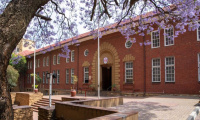

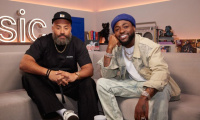


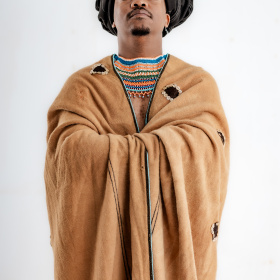
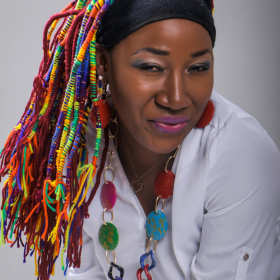
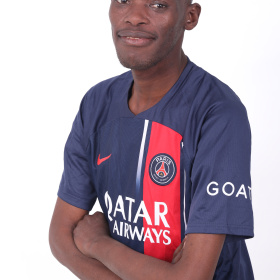
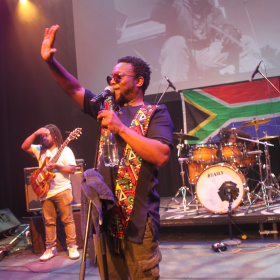
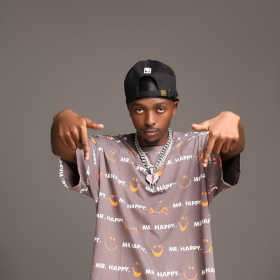


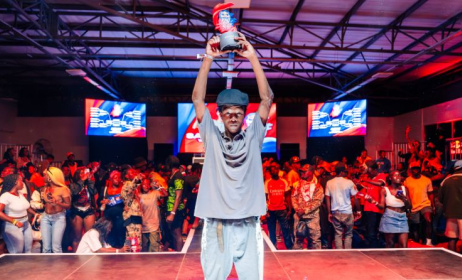


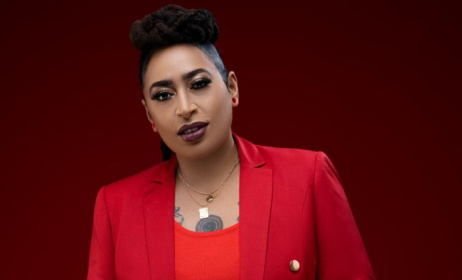

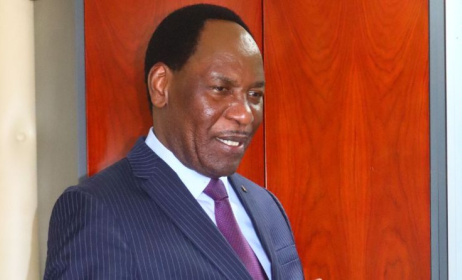
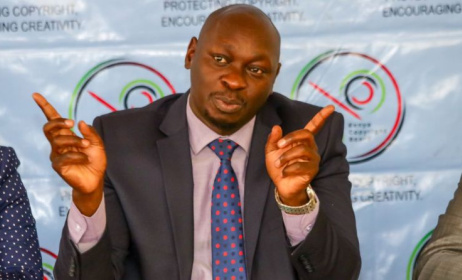


Comments
Log in or register to post comments